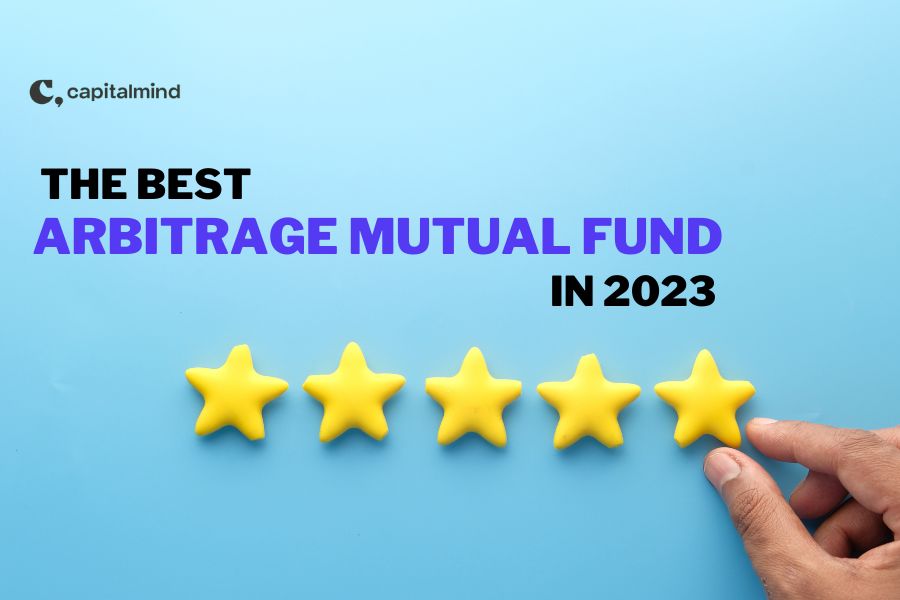Axis Mutual Fund has launched an NFO (New Fund Offering) for a thematic active equity fund called the Axis Special Situations Fund. The NFO is open from 4th Dec to 18th Dec 2020. We took a look to see if it makes sense for investors.
Short Answer: [Updated Mar 2021]
No. The marketing pitch was great. The investment philosophy clearly differentiated, with a clear focus on international stocks, and on distruptive companies. The reality is disappointing. There is no international stock in its top 25 holdings, and its largest holding is HDFC Bank. In short, another me-too active mutual fund. Avoid.
Yes. In a world of similar-sounding active mutual fund pitches, this one stands out by aiming to pick companies that are likely to benefit from disruptions. By defining disruptions broadly, they give themselves some leeway for the kind of stocks they will pick, which is not a bad thing. By aiming to allocate 35% to international stocks, they offer much-needed international diversification to Indian investors. The first portfolio disclosure after launch will be the true test of whether they stick to that eloquent marketing pitch.
Read on for our take on the Axis Special Situations Fund NFO.
[Updated 31 March 2021]
When the NFO came out, we said we liked the investment philosophy, the rationale presented, and the fact that it would also invest overseas into companies fitting the brief. But we also said, we’ll need to wait and watch what the fund ends up actually holding. Read our detailed take in the section below.
To recap, the stated core philosophy of the Axis Special Situations Fund is:
“The fund will look to invest in stocks that are:
-
Benefiting from disruptive change (disruptors, enablers, adaptors) on account of technology, regulatory, or any other factors or
-
Witnessing a significant turnaround potential from a prolonged cyclical slowdown.
We felt it was a meaningfully differentiated approach versus other active mutual funds. It has since gathered ₹2,300 Crores in assets under management.
But we also added a specific quote in the “What we have to watch out for” section
“If after all the talk of disruption, it’ll be disheartening to see HDFC Bank as their largest holding in their first portfolio disclosure communication.”
And here are the portfolio holdings as we write this a quarter after the fund made its debut.

Source: axismf.com

Source: valueresearchonline
The fact that it has underperformed its benchmark over three months is not the problem here. As a “Special Situations Fund” focusing on companies bringing about disruptive change, and your biggest holding is known more for disrupting its own customers from doing basic banking on its platform, no wonder active management gets the brickbats it does. Add to that, after emphasizing on 35% international exposure, its top 25 holdings are domestic stocks. Sure, there are a couple of non-traditional companies in there, but the fund has underwhelmed us with its choice of portfolio.
[Original post published in Dec 2020]
Axis Special Situations Fund in a nutshell
Investment Objective: “To generate long-term capital appreciation by investing in mis-priced stocks facing special situations. The mis-pricing of stocks can occur due to companies facing special situations like regulatory/policy changes, management restructuring, technology led disruption and innovation or any temporary challenges in the operating environment.”
Investment Strategy:
“The fund will look to invest in stocks that are:
- Benefiting from disruptive change (disruptors, enablers, adaptors) on account of technology, regulatory, or any other factors or
- Witnessing a significant turnaround potential from a prolonged cyclical slowdown.
Such opportunities can be available at company level, industry/sector level or market level. The special situations which cover some of the disruptive changes are given below:
- Shift from unorganized to organized: Across a host of sectors, reforms such as GST are pushing businesses to get more formalized. This trend is likely to get further enhanced by reforms in tax, labour and other regulations going forward and will allow the organized businesses to gain market share from the unorganized. Pushing this trend further is the restructuring of the supply chains and the formalization of retail trade. This is a fundamental shift that will transform the way business is done in India and is likely to benefit the players that can adapt their business models and make themselves more efficient.
- Change in lifestyle aspiration leading to premiumisation: As per capita income grows in India the middle class and upper middle class is growing in size and consumer trends are transforming. The most notable feature is the move from a value approach towards a desire for premium branded products. At the same time value for money instincts of the Indian consumer have not gone away. So there is a challenge for companies to provide an aspirational product with the right branding and at the right price point in order to exploit the opportunity.
- Technology led disruption in business model: Technological change is transforming entire sectors practically overnight. Whether it is in terms of how businesses are using tech to innovate and create new product propositions, to better segment their customer base or to innovate their service delivery and customer engagement. Further tech innovation can produce winners and losers as many new business models are born and the old unresponsive managements are left behind – the trends accelerated by massive infusion of private equity money in favour of the new innovators.
- Effect of internet/ digital delivery channels on traditional businesses: The internet/ social media/ e-commerce/ mobile app ecosystem has transformed our consumption patterns and they are likely to continue doing so going forward. Especially for the retail and services sector, service delivery over digital channels is transforming the existing cost structures and delivery margins and forcing market share shifts in favour of the nimble and techaware businesses.
- Business process innovation: Innovation in the business processes can change the fortune of a sector. By identifying an unmet consumer need or pain point and finding a profitable way of addressing it, new businesses can successfully take on existing leaders and generate lasting wealth for their investor base.
The above are some of the special situations which the scheme seeks to invest in. The fund manager may identify any other special situation from time to time and make investments in such companies, industries/ sectors and markets.”
Source: Scheme Information Document
Should you invest in the Axis Special Situations Fund?
What we like
International Exposure
Disruption in business and Indian companies don’t necessarily go together. Barring an exception or two, the biggest Indian index movers still operate with the same business models from two decades ago and are laughably outdated in terms of their technology capabilities. A fund modeled around disruption that only picked from a pool of domestic companies would have struggled to do justice to the theme.
This fund will invest up to 35% of its assets in international stocks based on the disruption theme.
Schroder credentials for international stock-picking
It’s all very well to say you will invest outside India, but there haven’t been many funds in India that have done it as a core part of their investment framework. This is excluding feeder funds that invest in parent funds outside India.
Schroder Investment Management is a global asset management firm managing ~$87B in assets worldwide. They own 25% of Axis AMC.
The fund prospectus says Schroder will advise international investments. There is no direct reference to a Schroder fund, but they have a disruption-themed fund called the Schroder International Selection Funds Global Disruption that seems to be the source for some of the literature in the Axis fund’s marketing material.
This means you can expect the international allocation to consist of reasonably well-researched picks.
Note we don’t think the international connection is an advantage by default. In another recently launched Axis fund, Global Equity Alpha Fund of Fund, we felt the underlying fund – Schroder Global Equity Alpha fund, did not given enough evidence of sustained alpha over its benchmark.
Not just more of the same
Typically equity mutual fund presentations become an undifferentiated blur of “bottom up stock-picking” frameworks that select “quality companies at reasonable prices”. To finally end up with the same set of stocks everyone else and the index owns.
The pitch for this fund touches on some real themes playing out in India
The presentation goes on to mention Reliance, Bharat Forge, Divi’s as potential beneficiaries of structural shifts. The point is not whether we agree with each of them. Of the 40-50 stocks they will own, don’t expect all of them to have massive disruption-led runways ahead of them. There just aren’t that many innovative new-age businesses in India.
But if they stay true to identifying companies based on the stated theme, then it’ll only take a handful of them to win big for the fund to deliver on its promise of a thematic active equity mutual fund.
What we don’t like have to watch out for
Marketing vs Reality
There is a joke about how a man who had just died got to pick between Heaven and Hell. He decided he wanted to walkthrough of both before deciding. The walkthrough of Heaven showed content people quietly playing on harps. The walkthrough of Hell showed wild parties with great food and drink. Since it looked way more fun, he chooses to spend eternity in Hell. On his first day however, he only sees massive fires and people groaning in pain. As he is being poked with a pitchfork he says, “But that’s not what I saw in the walkthrough!”, to which the devil responds “Walkthroughs are conducted by our marketing department”.
If after all the talk of disruption, it’ll be disheartening to see HDFC Bank as their largest holding in their first portfolio disclosure communication.
“It is better to fail conventionally than to succeed unconventionally.” – John Maynard Keynes
This is a real risk in professional money management, and no fund manager is completely immune to the temptation to buy what everyone else is holding. Whether this fund takes the risk of being different will only be known after a few months of launch.
Investor Expectations
Investing in a fund because it’s different from all the rest and complaining about tracking error from benchmark after one quarter is counterproductive, but all too common. Those who do invest in this fund will need to give it time to judge whether the strategy and the implementation work to do what active equity funds are meant to do.
Should I invest in this NFO
Our answer is a qualified Yes.
Assuming the expense ratio is reasonable and that it stays true-to-label, long-term investors can consider allocating a part of their equity allocation to this fund, but after looking to see what the fund will actually hold after it launches.
Disclaimer: Since we are active asset managers running a PMS, with quantitative and bottom-up fundamental portfolios, our views on equity and other mutual funds will reflect our bias.
Subscribe to Capitalmind Premium for access to premium articles, model portfolios and vibrant member forum.







